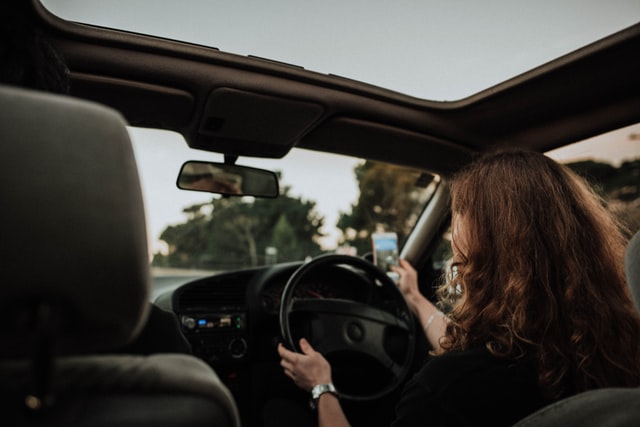MasterDrive is welcoming in driving while distracted (DWD) awareness month and, while it originates in the USA, the sentiments for such resonates with one, irrespective of where we are in the world. While it’s difficult to categorically say whether DWD increased or not, due to the effect of lockdown and the difficulty of conclusively determining when someone drives distracted, it is believed DWD is far too common either way. It is estimated that 40% of drivers look at their phone at least once every hour.
The CEO of MasterDrive, Eugene Herbert, says an important way to stop DWD is to illustrate just how dangerous it is. “It remains true that drivers will more easily engage in distracted driving than what they will drunken driving. This is despite studies showing it is just as dangerous, sometimes more. The reasons for this are wide-ranging but the belief one is good at it, likely lies at the heart of the matter.
“The importance of reducing DWD incidents is to ‘drive home’ the message that no one can do it successfully. If you indulge in this behaviour, at some point it will catch up with you, affecting not just you but passengers and other drivers too. A comment made recently by a USA law firm adequately describes the impossibility of not falling victim to its consequences: ‘saying you’re good at driving and texting is like saying you’re good at driving blindfolded.’”
If this does not emphasise the folly of DWD, below are 10 facts – sourced in the US – about texting and driving that might succeed:
- Drivers are distracted, on average, for five seconds while driving and using their phone which means they can drive the length of a football field looking down.
- You are six times more likely to get into a DWD crash than what you are while driving drunk.
- DWD makes you eight times more likely to be involved in a crash.
- It is estimated 11 teenagers die every day in distracted driving crashes because they are 400% more likely to cause a DWD crash.
- Up to 64% of vehicle crashes involve cell phone usage.
- A teenager using a cellphone and driving has the same reaction time as a 70-year-old driver not on their phone.
- More than 3 000 people were killed in DWD crashes in 2020.
- Additionally, 421 000 people are injured each year as a result of distracted driving.
- Over 660 000 drivers are using cell phones while driving at any given time.
- The National Safety Council estimates 6 million crashes per year are as a result of DWD.
As we head into a month that brings awareness to the dangers of this activity, let these numbers motivate changed behaviour. “If you tend to pick up the phone while behind the wheel, it’s time to realise how dangerous it is. Once drivers realise this, it is then important to acknowledge that simply telling someone not to do it isn’t going to bring about the required change.
“With current demands on employees, and even in personal lives, the solution is to find an alternative that allows for reduction of DWD and continued productivity. For this reason, MasterDrive partnered with NoCell in providing a solution to this complex need. It doesn’t just tell someone not to do it but gives them a way to still meet the demands placed on them,” says Herbert.
Rather Terminate the Call than Terminate a Life – Don't Let your Friends Drive Distracted!! Return or make the call when they are not Driving!! https://t.co/fxn3o92kRQ #ArriveAlive #DriverDistractions @MasterDriveSA pic.twitter.com/bcsPFiCkGh
— Arrive Alive (@_ArriveAlive) March 15, 2022


























